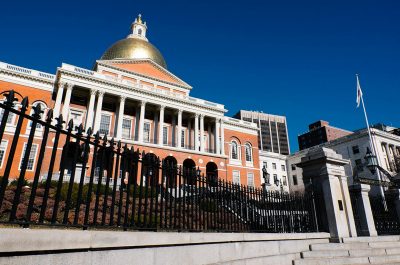
Governor Charlie Baker signed into law new maps redistricting the State Senate and House last week in an effort to reflect new census data and improve representation in the legislature.
Drawn up by a Special Joint Committee on Redistricting, the new maps increase the number of districts with high minority populations, as well as reorganize some Boston neighborhoods like Jamaica Plain.
This year’s Special Joint Committee on Redistricting is co-chaired by State Senator William Brownsberger and State Representative Michael Moran.
All 50 states redraw the boundaries of their electoral districts following the release of the U.S. Decennial Census data. This process is motivated by the need to honor “that concept of ‘one person, one vote,’” Tim Vercellotti, director of the Western New England University Polling Institute and a professor of political science, said.
“Over a 10-year period, the population will grow and it can also shift,” Vercellotti said. “We want to make sure that each of these districts has a roughly similar amount of people.”
While about a third of residents in Massachusetts are people of color, members of these communities only make up 14% of the State House and 5% of the State Senate, Vercellotti said. This leads to the need for “majority-minority” districts, which ensure elected representatives are reflective of the diversity of their constituents.
The new map, approved by Baker, increases the number of majority-minority districts in the State House from 20 to 33 and State Senate seats from three to six.
But a majority-minority district does not guarantee the election of a member from a minority community. Before the redistricting, there were 20 majority-minority districts in the State House, but only 14 members in the 2019-2020 Black and Latino Legislative Caucus.
“Incumbents have an advantage when they run for re-election … they tend to have a positive reputation among their constituents,” said Associate Professor of Political Science at Boston College David Hopkins. “So districts can often be racially diverse and have substantial non-white voter proportions and yet not necessarily predictably elect non-white representatives.”
Ensuring districts of an equal population is not the only task the committee faces in deciding how to redraw districts.
“It is also the case that the fair treatment of racial minorities is another judicially imposed consideration,” Hopkins said.
Beyond representation, Vercellotti argues the diversity of a legislature impacts tangible issues as well.
“It can improve the output of the legislature by leading to a wider variety of bills, and potentially laws, that speak to a wider variety of people and their needs.” Vercellotti said.
Kevin Peterson, founder and executive director of the New Democracy Coalition, said he worked with Brownsberger for four months to propose changes to make electing a Black State Senator to the Boston seat possible.
This culminated in the redistricting of the Second Suffolk District, which removed the majority-white Jamaica Plains area and added to the district the majority-Black Mattapan area.
The new district now comprises 42.6% Black voters and 26.4% Hispanic voters.
Peterson said he is “extremely pleased” with the outcome of the new State Senate Map.
“There’s a sense of relief and pride across the community that this Senate seat has been recreated,” Peterson said. “This time [the next election] we will be electing a new Black senator into the Massachusetts Senate. That is something the entire community is proud about having.”
Policy and Communications Manager at MassVOTE — a non-profit advocating for increased electoral participation — Alex Psilakis said the organization spent a significant amount of time advocating for the areas of Randolph, Avon and Stoughton to be redistricted into a majority-minority district with Brockton.
The initial map released in October however, split up the three regions, prompting them to push for the district’s redrawing. This included advocating in the press and social media and providing testimony in public hearings.
“The hearings are really really great opportunities for people to speak directly to legislators and tell them exactly what they feel,” Psilakis said.
The district ultimately included Avon and part of Randolph, although Stoughton remained in the Norfolk, Plymouth and Bristol district, what Psilakis called a “compromise.”
“That’s disappointing but it gives us something to shoot for in the next 10 years. But we were able to achieve some change,” Psilakis said. “It’s not perfect, but it’s something to definitely be proud of.”
UPDATE 11/11: Article edited to change Brockton seat to Boston seat.






















































































































